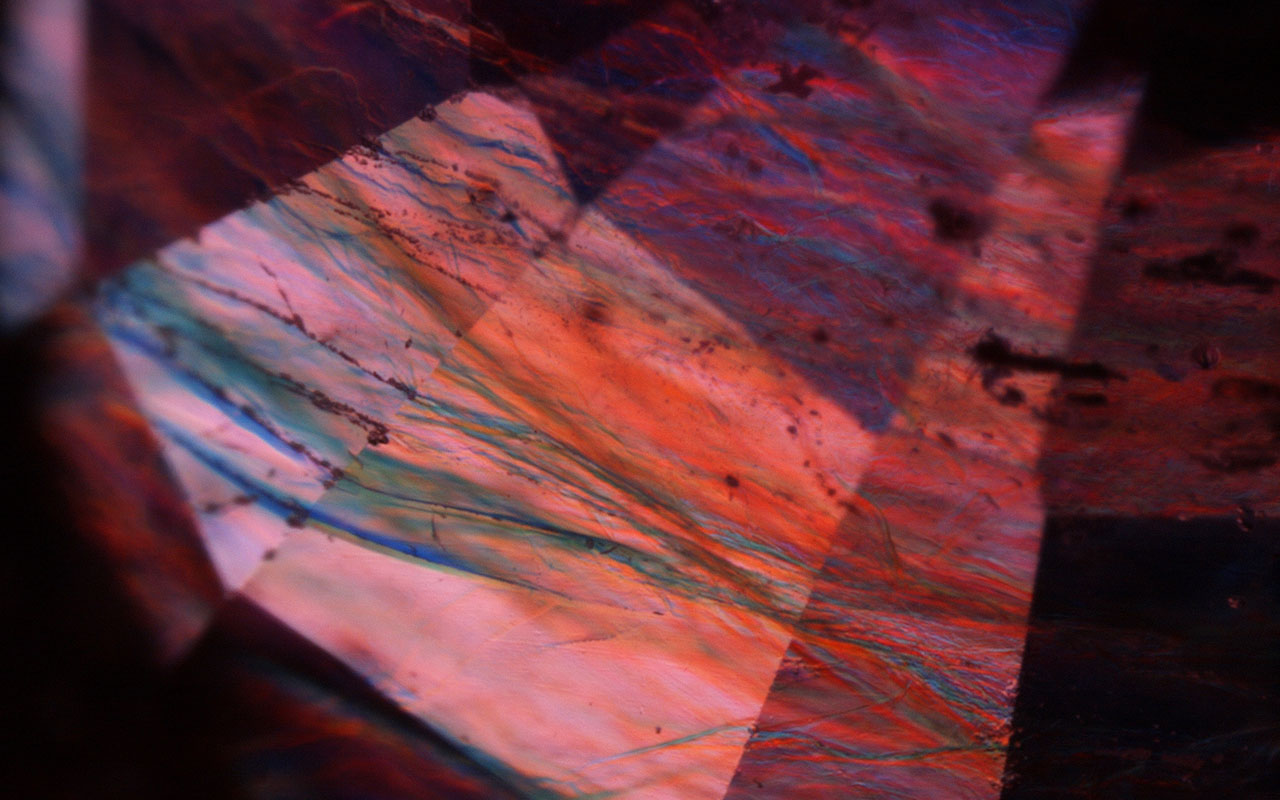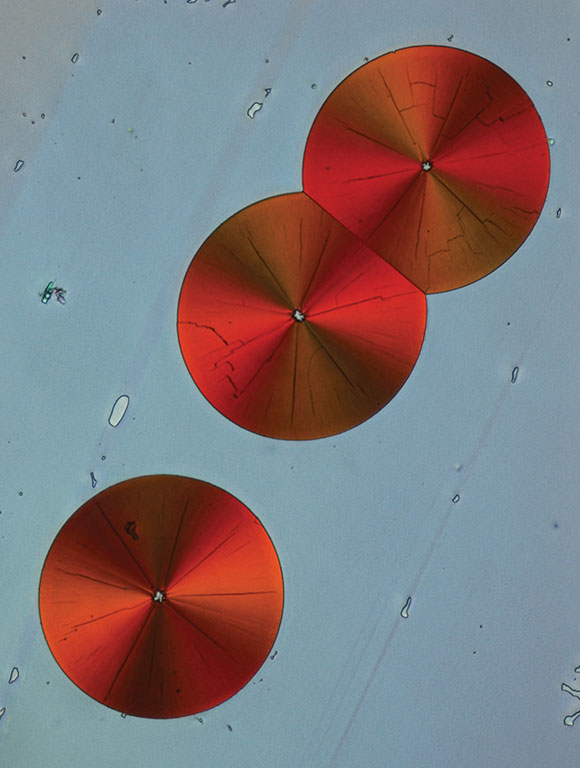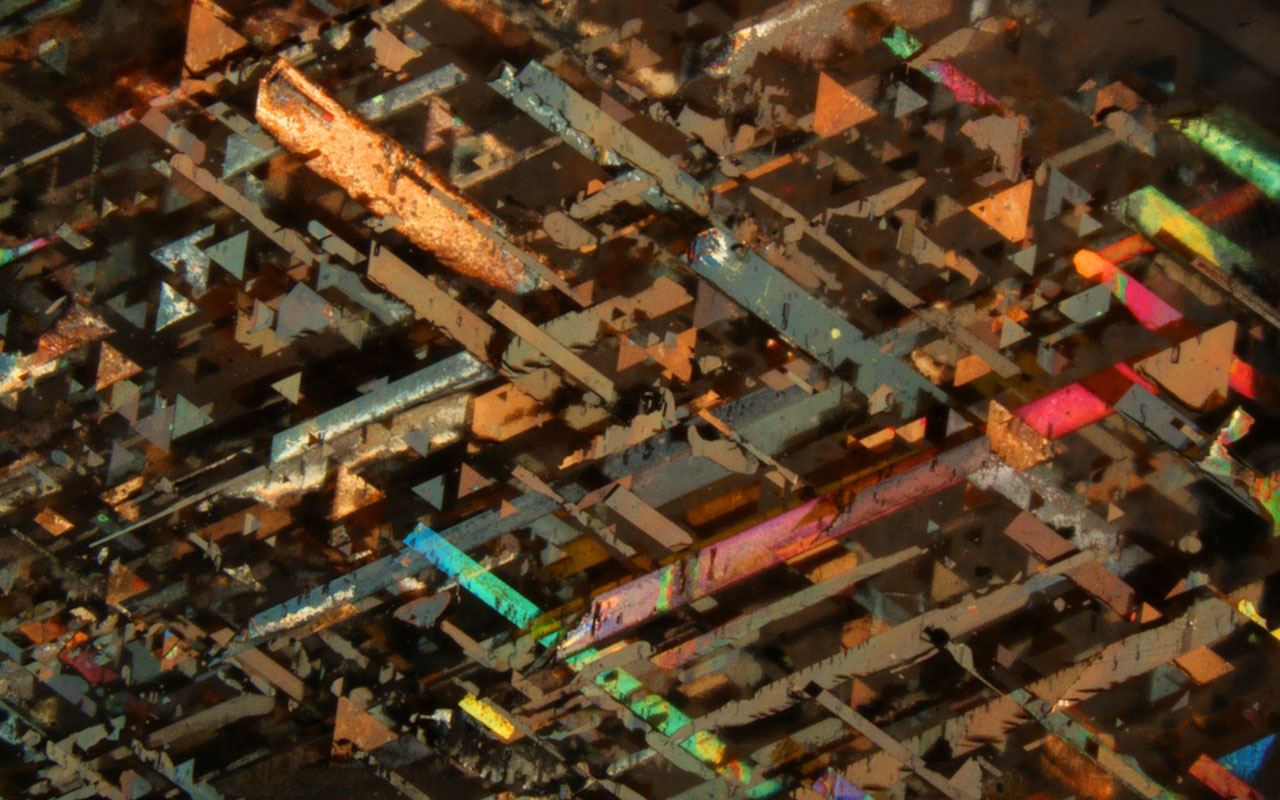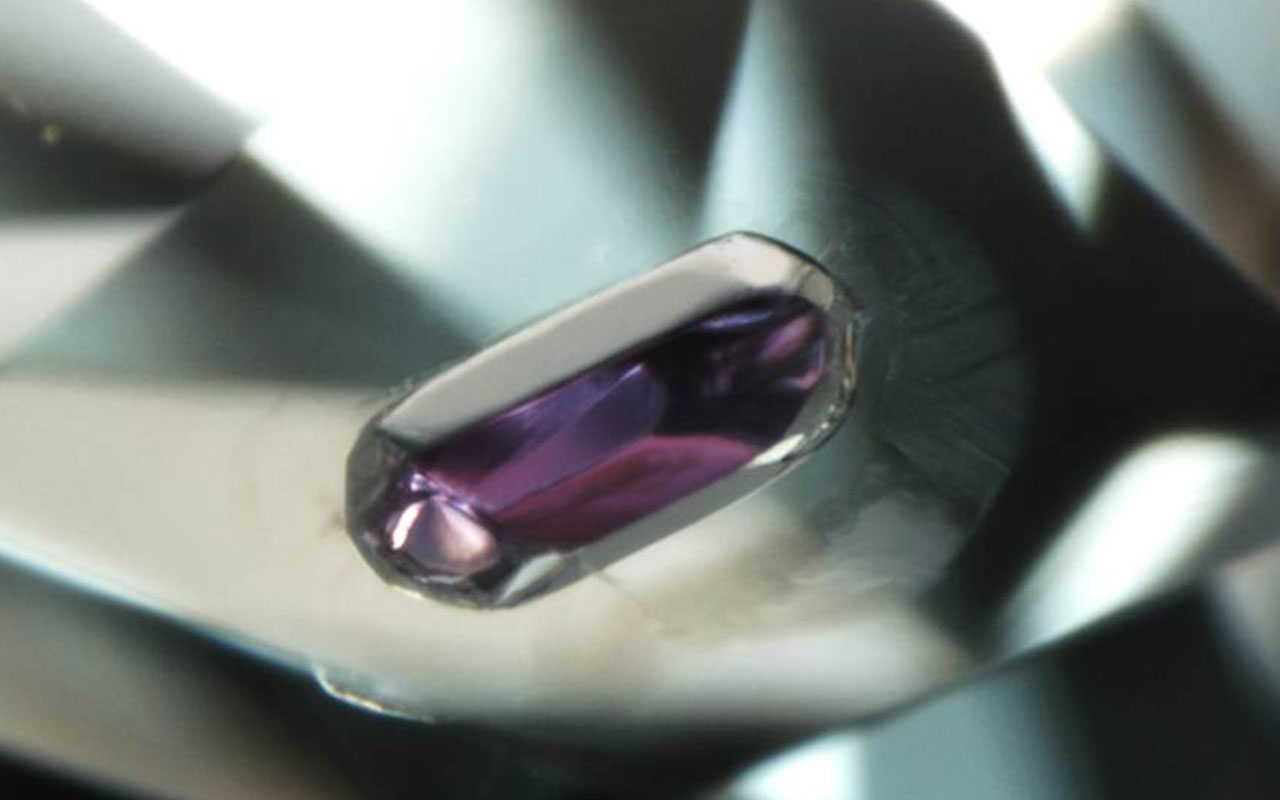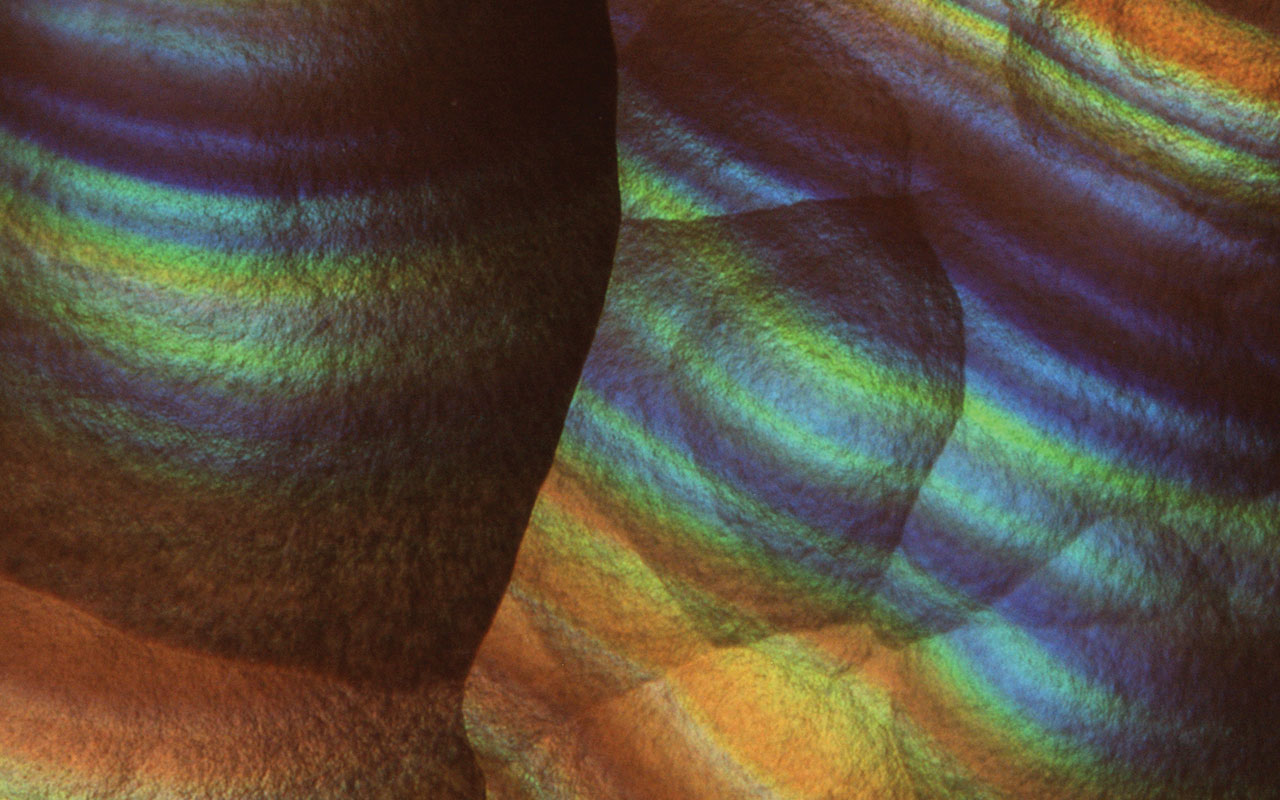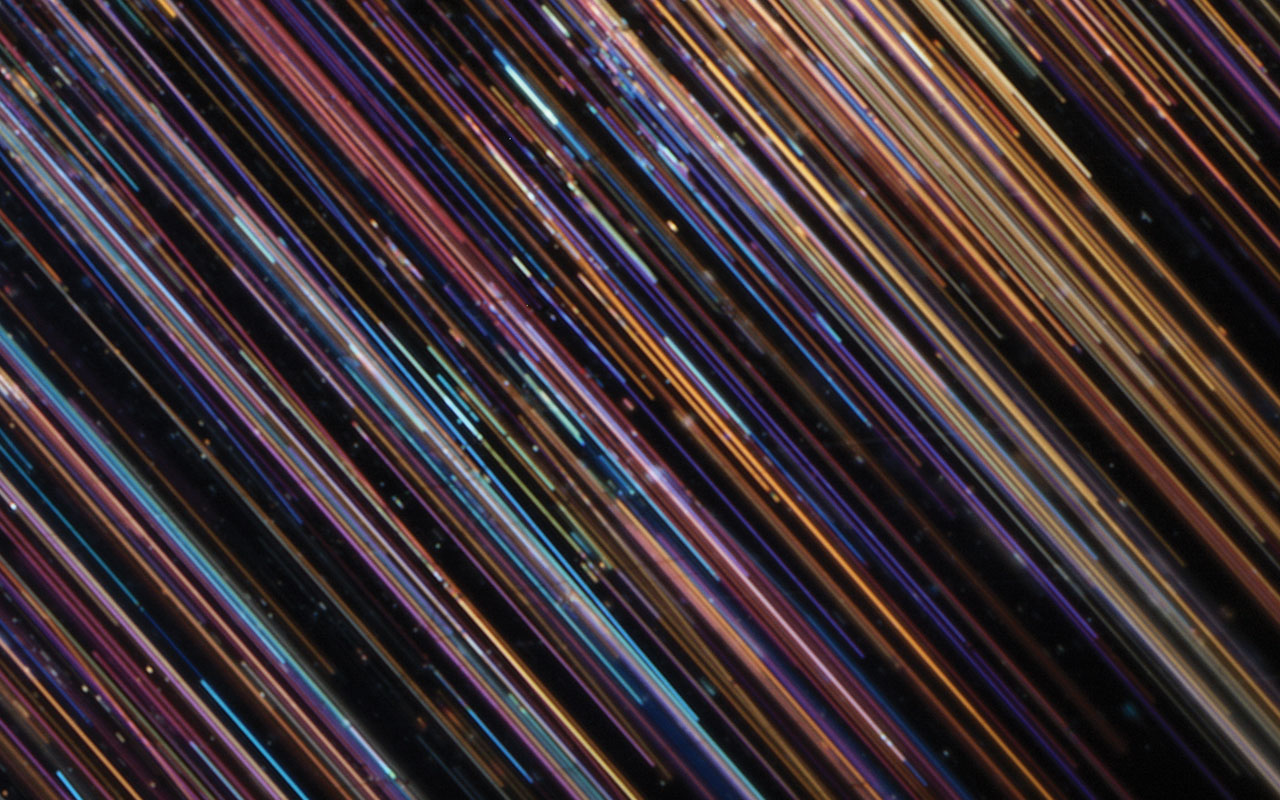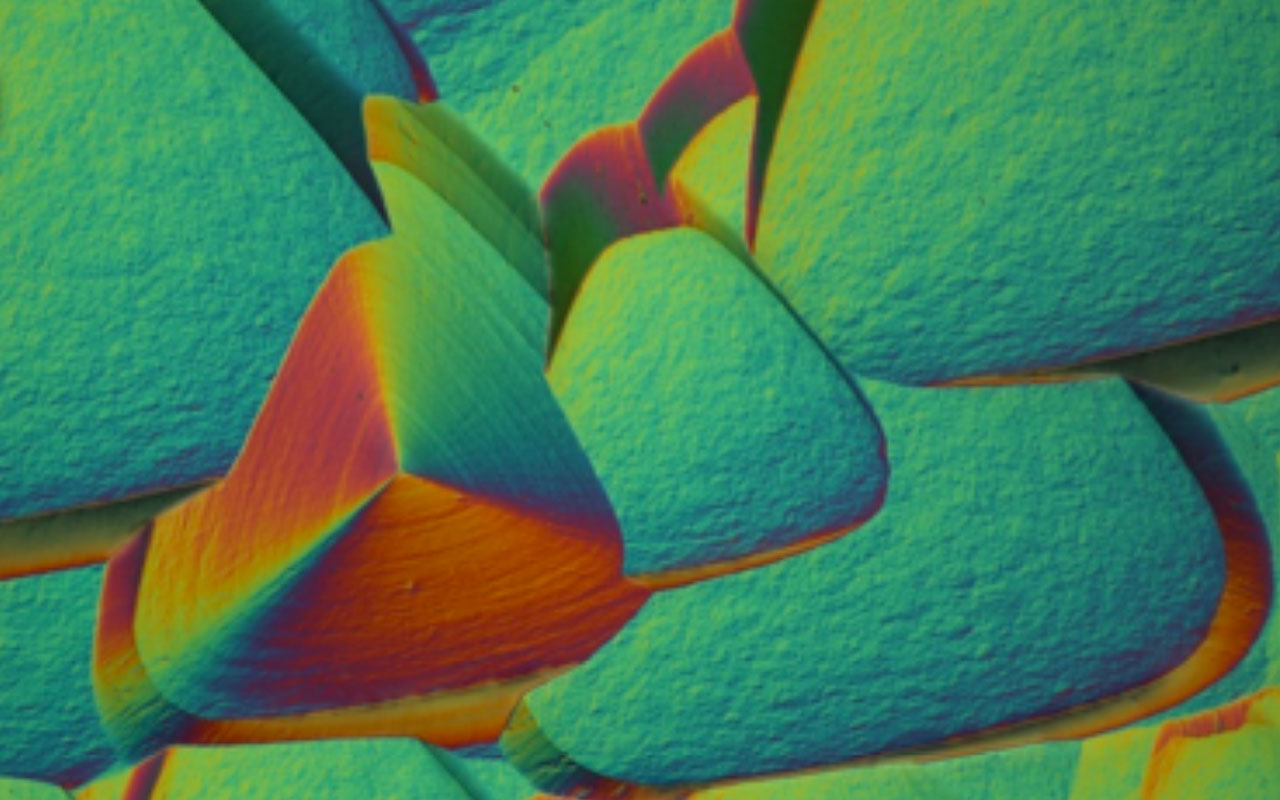The Hidden Beauty of Gemstones
October 10, 2013
Using powerful microscopes and cameras, GIA researchers have photographed numerous gemstones at magnification up to 1,000 times larger than seen with the unaided eye (this magnification would be notated as 1000x). GIA researchers like John Koivula, a pioneer in the field, have used photomicrography to document inclusions in gems. These gemological “fingerprints” tell the story of a gemstone and often reveal if a stone is natural, synthetic, or treated.
Photomicrography has another benefit. Since gem minerals have a high degree of transparency, they serve as geological time capsules. By documenting inclusions contained in them with photomicrography, geologists can study the genetic environment in which a mineral grew. Sometimes this reveals the part of the world where a gem originated. Photomicrography serves invaluable scientific purposes. It also makes for absolutely stunning images.

